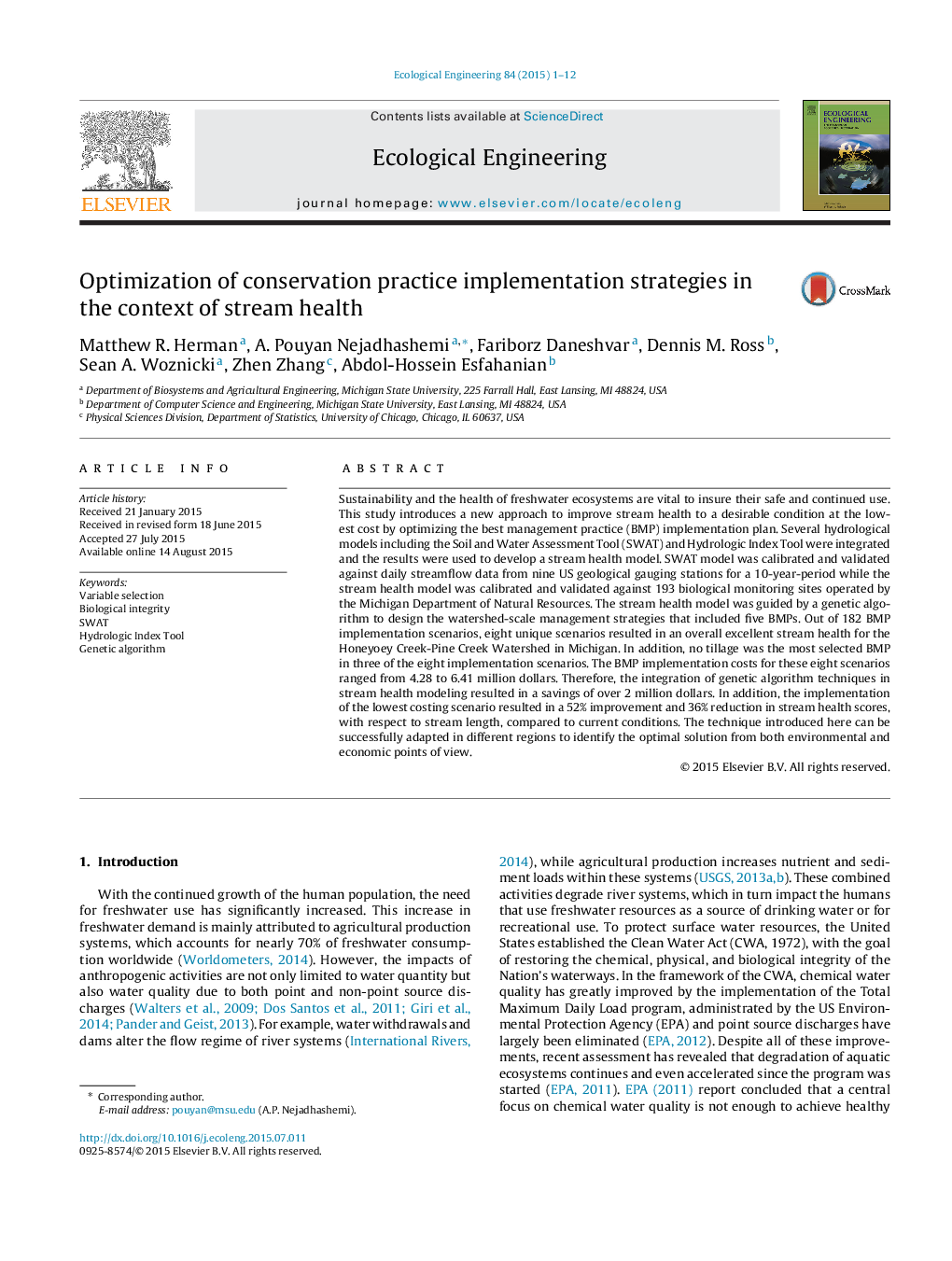| Article ID | Journal | Published Year | Pages | File Type |
|---|---|---|---|---|
| 4388759 | Ecological Engineering | 2015 | 12 Pages |
•Stream health models were developed using artificial neuro-fuzzy inference systems.•Five conservation practices were modeled for stream health improvement.•A genetic algorithm framework was used to guide conservation practice implementation.•No tillage was the most selected conservation practice by the genetic algorithm.•The proposed system identifies optimal economic and environmental watershed management solutions.
Sustainability and the health of freshwater ecosystems are vital to insure their safe and continued use. This study introduces a new approach to improve stream health to a desirable condition at the lowest cost by optimizing the best management practice (BMP) implementation plan. Several hydrological models including the Soil and Water Assessment Tool (SWAT) and Hydrologic Index Tool were integrated and the results were used to develop a stream health model. SWAT model was calibrated and validated against daily streamflow data from nine US geological gauging stations for a 10-year-period while the stream health model was calibrated and validated against 193 biological monitoring sites operated by the Michigan Department of Natural Resources. The stream health model was guided by a genetic algorithm to design the watershed-scale management strategies that included five BMPs. Out of 182 BMP implementation scenarios, eight unique scenarios resulted in an overall excellent stream health for the Honeyoey Creek-Pine Creek Watershed in Michigan. In addition, no tillage was the most selected BMP in three of the eight implementation scenarios. The BMP implementation costs for these eight scenarios ranged from 4.28 to 6.41 million dollars. Therefore, the integration of genetic algorithm techniques in stream health modeling resulted in a savings of over 2 million dollars. In addition, the implementation of the lowest costing scenario resulted in a 52% improvement and 36% reduction in stream health scores, with respect to stream length, compared to current conditions. The technique introduced here can be successfully adapted in different regions to identify the optimal solution from both environmental and economic points of view.
